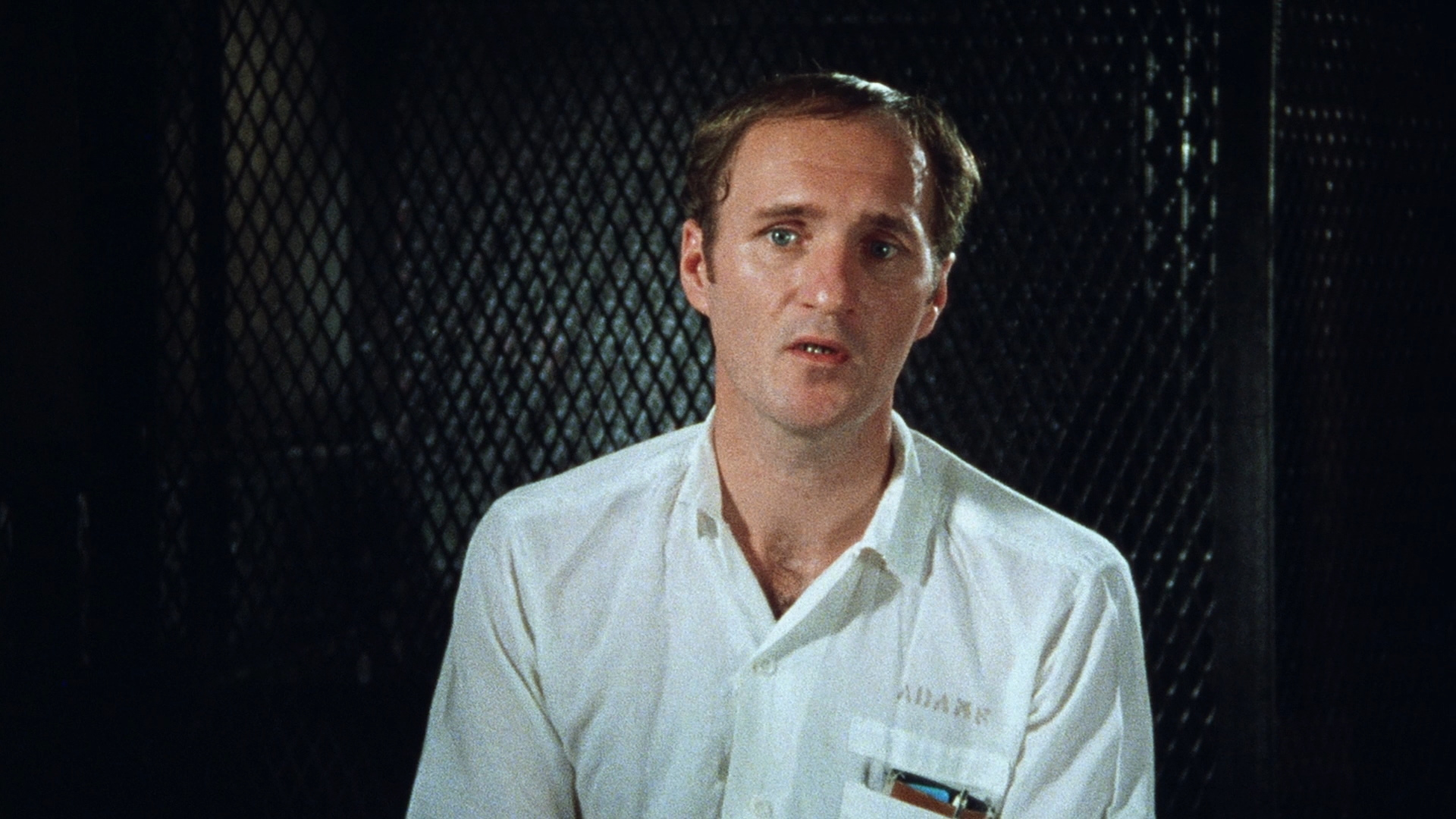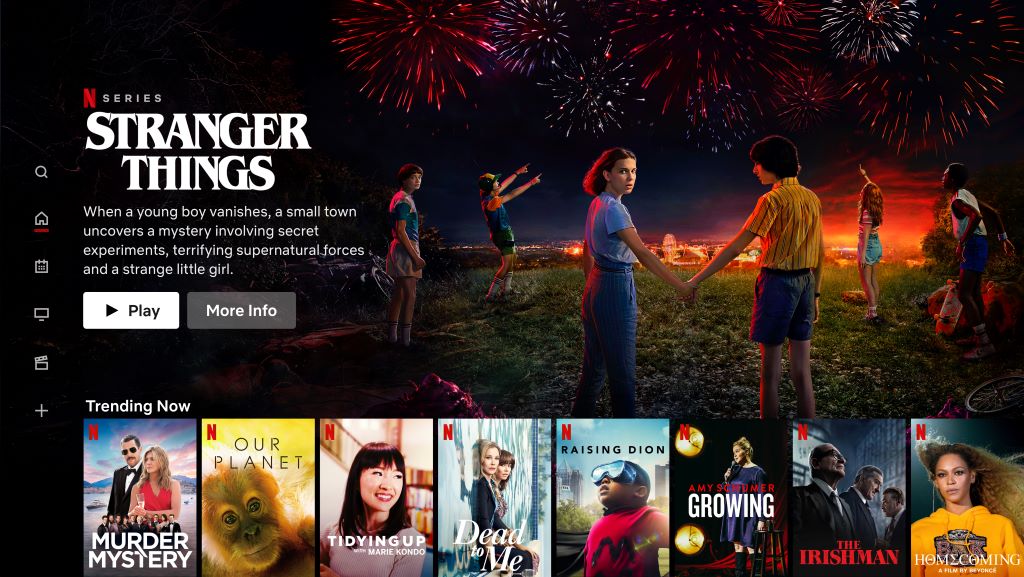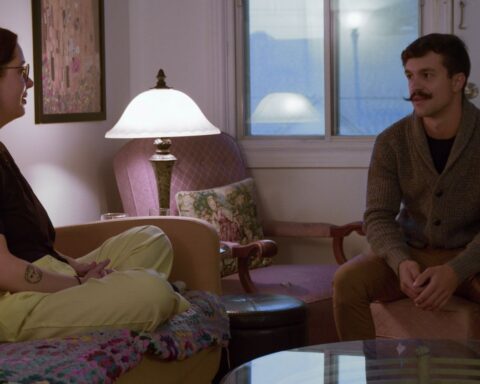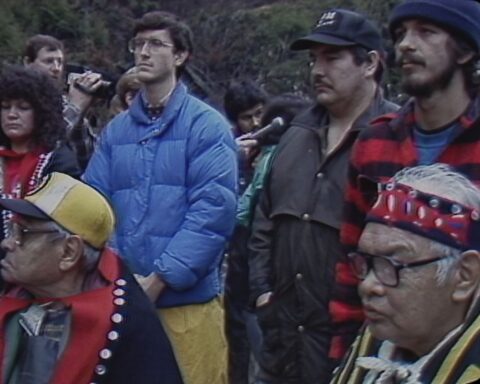Not too long ago, we pursued our films by journeying to buildings called video stores, which dotted the landscape. Blockbuster alone managed 9,000+ at one point. Others were spirited and independent—and a few still exist. At the time, it was a revolution in entertainment. As consumers, we gained agency over our selections, experiencing cinema we sought out in our own homes. Sometimes, my friends and I would even leave with samples of that “lesser” genre, sequestered to the back corner—perhaps next to a limp palm or dusty stack of cardboard cut-outs of Michael J. Fox—the documentary film.
The volume of videos, and especially documentaries, on offer in those mostly extinct stores pales in comparison to the torrent piped directly into our homes in 2022. We’ve come a long way from 1988, when the documentary The Thin Blue Line was marketed as a “new kind of movie mystery,” or in other words, as a fiction, so that video store patrons would rent the film.
Now we are treated to more quality content, available at our leisure, than we have ever known to be possible. But the streaming revolution, while delivering irrefutable benefits, also begets costs. These screen externalities, if I can borrow a term from the business world, are all the more present when we consider documentary in the online overflow. The recent global pandemic has put the consumption of culture into even sharper relief, and this moment presents an opportunity for scrutiny and reflection with regards to home doc reception.

Abundance and Fragmentation
The pandemic has exacerbated the privatization of media engagement. I mean both the private-versus-public experience of media engagement as well as the commercialized, monetized digital content delivery systems enabling our access to myriad media in all shapes, forms, and languages. In the last two years, audiences have retreated from public venues in order to encounter cultural events and artefacts in their own homes on platforms engineered so brilliantly toward attention-capture their interfaces even assuage us of having to watch irksome credits, so that within seconds of finishing one film or show, we are jettisoned into the next. More audiovisual content is at our fingertips, and our fingertips, long liberated of rewind duties, now need not even press play. And no walking to video stores!
The pandemic has also made undeniably evident an abundance of content, a relative ease of access and—in stark contrast to endless rows of the same title on video store shelves marking out reproduction limitations—the now-banal realization that content isn’t finite. Nowadays you can browse countless audiovisual artefacts to the point where you realize you’ve taken as much time perusing available moving-image repositories as you would watching an entire film.
It can be a thankless, fruitless chore to find a good documentary to screen on the big platforms.
As in the opening scenario, we may select the next title “suggested” by an algorithm and end up watching a mediocre film, whether doc or fiction. These are moments that begin full of promise, yet are squandered on tepid entertainment. If this sounds at all familiar, it is likely you are identifying with the now very common habit of content grazing—a quintessentially consumer activity that is filling, but perhaps not so nutritious.
It can be a thankless, fruitless chore to find a good documentary to screen on the big platforms. While Netflix has championed their cookie-cutter version of the docu-series, the big streamers generally have scarce offerings (excluding the “real life” shows of Discovery+ and Nat Geo docs on Disney+). And, while reproductive scarcity may belong to another analogue era, there is a new scarcity of selection engendered by fragmentation and exclusivity. Big doc hits like The Rescue (2021, Disney+) or My Octopus Teacher (2020, Netflix) require separate subscriptions that can become costly. And the non-hits?
Cura-what?
Ah, those persistent, less-than-commercially-viable docs. Aside from the hundreds of streaming platforms run by film festivals and independent distributors, other services are out there for this spunky sort, but not only are audiences faced with mounting subscription accumulation, another problem born of big-tech engineering persists: total lack of human curation. In the stream-verse, algo-curation has displaced anthro-curation.

On the one hand, our new golden age of cinema streaming brings forth an abundance of content that is fragmented across fiction-dominated, commercial, and secondary niche subscription services, while on the other leaving audiences adrift in an ever-expanding content wilderness devoid of human guides. A frequently uttered greeting by the clerk working at my local video store in the ’90s comes to mind: “I saved this one for you—I think you’ll really like it.” I had also worked in video stores and similarly recommended titles to customers. That kind of personalized, thoughtful cultivation of film appreciation via human engagement and exchange—well, it’s been retooled, futurized.
How, exactly? With lush landing pages, corporate controls, and algorithmic domination. Worthy content is too often buried in data ranges that require full-scale mountaintop removal to facilitate discovery, while the marquee investments flicker beckoningly on home screens cajoling our clicks. Toss documentary into the film selection fray, and these expeditions are amplified into lost hours searching for gems.
And so, documentaries, like other film fare, have multiplied along with privatized viewing modalities, while through these changes the human element has been evacuated. We’re navigating fragmented spaces of online reception where one requires four subscriptions to watch four films, and face crushing content fatigue fueled by inaccurate, haphazard algo-curation. We documentary fans necessarily struggle to balance our desire to discover new works and our shrinking agency to locate and watch known works.
With that in mind, I’ve perused two “areas” of online doc delivery and reception that feature non-fiction cinema.

Public Interest & Educational
Publicly-funded streaming services, from Britain’s Channel 4 to PBS to AJE (Al Jazeera English) to CBC, have added online content delivery to their televisual distribution efforts. As linear TV still putters away with conform-to-us timetables and strict temporal logics, the same outfits are diversifying reception modes, and this is a very good thing. Legacy TV dies hard, however, as streaming through CBC Gem frustratingly demonstrates. Public-interest media implies mandates of access and diversity as well as not-for-profit principles, and with CBC the content is mostly free, at least with regard to paywalls. The added watch tax is paid by audiences suffering through often inappropriate and incompatible ads clunkily retro-stuffed into creative content. It’s a jarring experience, and as we all become accustomed to content free of rapturous Wal-Mart ads, it surely can’t last. Take my taxes and cut the content contamination out, please.
Another established, publicly funded Canadian doc-deliverer, the National Film Board of Canada, has over 5,000 films streaming, mostly for free. This is what public-interest media should look like: (mostly) free and, mercifully, no ads. The NFB also addresses the earlier-mentioned concern, at least in part, around curation. NFB.ca features many curated playlists and programs, and, unlike so many other doc-centred streamers, actually produces their own copy— texts written (and rewritten to adjust for cultural shifts), not copied and pasted from other sites. This curatorial practice should be the norm, but, surprisingly, is not.
A close cousin to public-interest media can be found in the educational sector (where the NFB in fact offers NFB Campus). Aside from digital collections that libraries stock (or used to stock), some other key players hold court. Kanopy is a start-up that took educational documentary distribution by storm after their 2008 launch. Their model, one in which public libraries, universities, and colleges pay a licensing fee of approximately $2 USD each time a user watches at least 30 seconds, and an annual rate of $150 USD after only a handful of views, is a windfall for the Australian-American corporation, and can also be a revenue generator for some filmmakers (though less so if their film is on Kanopy via a distributor).
Kanopy is killing publicly-held collections and, by extension, archives.
In a familiar neoliberal narrative, where corporations swoop in to save struggling public sector institutions, Kanopy and its vast online collection of films surely appeared to be a win for cash-strapped libraries. But there is a fundamental problem with this model, one I encountered when teaching at Dawson College in 2019: Kanopy is killing publicly-held collections and, by extension, archives. That year, Dawson Libraries was forced to send an email to faculty urging us to limit our use of the service, citing high streaming costs that had exceeded their estimated benchmark for the year.
Facing similar financial pressures, three massive public libraries in the US—the New York Public Library, the Brooklyn Library and Queens Public Library—all discontinued Kanopy at their institutions that same year. We are left to ask: With regards to all those amazing documentaries made available for “free” through this profitable company, where can students and library patrons find them now? Certainly not in library collections because they were never purchased. The service was outsourced to a company that collected its fees and moved on. Our public educational institutions are made fundamentally weaker by such quick fixes that ebb access and decrease diversity in the long term. DRM champion OverDrive Inc purchased Kanopy last year, signalling one more reason for our schools and libraries to discontinue the streaming service and go back to the tried-and-tested collection-building of pre-platform days—but let’s face it, that stream is now a raging river.
Where is the quality in quantity? We need curation now more than ever.
Niche, Indie and Changemaking
This second category of streamers is expansive, but not all highlight docs. From MUBI to Criterion to streaming giant Vimeo, there are oodles of documentaries to be found in the niche neighbourhood of the stream-verse. But those dedicated to documentary form a motley crew on the periphery of that niche.
Films for Change, Films for Action, Films for Good, Films for Humanity, Films for Films that Seek to Change with Film… It’s impossible to generalize with so many earnest start-ups sharing non-fiction stories online, but some persistent trends do zig-zag across this funky bunch. Perhaps Films for Change (FfC) best illustrates. An Australian company that launched in 2014 as a free screening series and recalibrated to streaming in 2020 due to the pandemic, FfC boasts a subscription service that is “ad-free content with no corporate interest.” FfC operates in familiar doc territory—spreading stories that hopefully contribute to positive change, for a monthly fee. While its team is small, FfC seemingly acquires a lot of titles, at least if the weekly emails are any testament.
But the nagging lack of curatorial vision and a cohesive selection strategy turns streamers like FfC into rudderless non-fiction providers who perhaps follow the mantra that quantity is more important to audiences than quality. This is at the crux of content fatigue—a little hand-picked, thematically relevant, and quality-assured selection is sorely needed (as championed in the mostly-fiction programming of MUBI). A streamer like Gaia may not be your cup of tea, but at least they are curatorially catering to a particular need and taste with a roster of self-care and “health-conscious” films ready for you to watch while quietly uttering namaste.
The streaming world of grassroots, liberal, films-fuel-change companies signals an industry-wide issue. Where is the quality in quantity? We need curation now more than ever. Human care is needed to make these smaller services work effectively, offering the best examples of films that are positioned to seed change and activate audiences. A combo of films saving the world and “I saved this for you.”
Documentaries, like other film genres, are online, available for viewing at our pyjama-wearing leisure. How we find them, how our documentary encounters are shaped, and the impact of docs is all shifting terrain, and it brings up other challenges beyond the problematic of privatized reception spaces.
Private Engagement
The online documentary dogpile indicates a larger challenge for the genre’s longstanding value as a vehicle for social transformation. Experiencing a provocative documentary in a public screening space with scores of strangers taps a unique power in the genre. New information informs us. Cinema’s compelling, emotionally-charged storytelling moves us. Lights come up, and we—the audience—are a body politic. We are sharing space, holding space, caring for what is often transformative space. People not only see each other, but feel a shared presence and experience affect, while anger, sorrow, hope, and imagination manifest in the collective. It’s potent stuff, and it’s no surprise documentary festivals sprout like debutante daisies everywhere.
But when we sit in our private spaces, away from the energy and synergy of a room lit with documentary sparks, we experience non-fiction cinema in different ways. This is not a moral judgement, but an assessment of divergent screening contexts. Surely there is plenty of room for a variety of reception experiences. The organization I’m part of, Cinema Politica, has answered requests to make our films available online by now offering a streaming collection. And the pandemic has shifted this move from public reception mode into hyperdrive.
While there are indications that point to a desire to return to the bums-in-seats past, the stream-shift will undoubtedly have lasting effects. Documentaries, like other film genres, are online, available for viewing at our pyjama-wearing leisure. How we find them, how our documentary encounters are shaped, and the impact of docs is all shifting terrain, and it brings up other challenges beyond the problematic of privatized reception spaces.
Freedom’s Just Another Word for Content on the Loose
Most of us have lost hours in YouTube wormholes, or found other sites, like topdocumentaryfilms.com, which embeds 3,000 docs anyone can stream for free and maintains that it “tries to help the independent documentary filmmakers to promote their films.” Free sharing docs online is an effective way to get stories out to audiences. Still, freestream aggregators, aside from raising the issue of how to remunerate filmmakers, highlight the chronic question of curation.
Freestream sites are mostly grab bags of any doc that’s online for free, despite proclamations otherwise, as with watchdocumentaries.com, whose stated mission is to “curate informative and educational documentary films.” It is now commonplace to use “curate” as a metonym for a host of other practices and processes around choosing, displaying and sharing (including “curating” one’s socks), but I always come back to the Latin root: cura, to care for.
We care about documentary and certainly documentary stories. Let’s apply such care to how they’re shared and seen, whether via publicly funded institutions, news sites, corporate platforms, niche channels, or virtual content warehouses.














